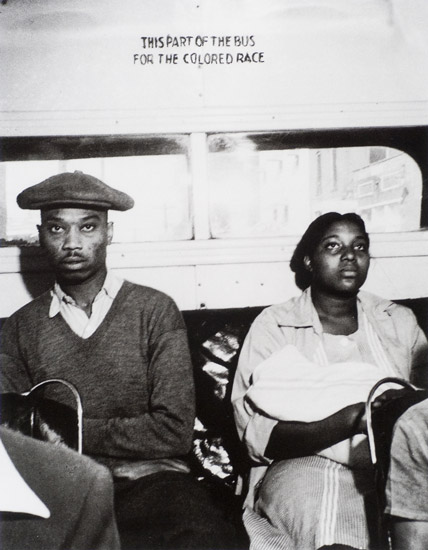Research Project Examines Pioneers in ‘Socially Conscious’ Photography
Janet Zandy studies underrepresented women photographers Hansel Mieth and Marion Palfi
Center for Creative Photography, University of Arizona at Tucson
Somewhere in the South, Marion Palfi: A depiction of African Americans in the segregated South.
The contributions of two pioneering women photojournalists and the impact their work had on the development of social activism and civil rights in the United States is the focus of a new study by Janet Zandy, professor of English at Rochester Institute of Technology.
The project, focusing on the lives and work of Hansel Mieth and Marion Palfi, has been awarded a 2009 Ansel Adams Research Fellowship by the Center for Creative Photography and a grant from the Peter E. Palmquist Memorial Fund of the Humboldt Area Foundation. Zandy will be a resident scholar at the center, where she will study the prints and archives of Mieth and Palfi and situate their work within a larger project about the aesthetics and social consciousness of representational photography.
Meith (1909-1998) and Palfi (1907-1978) are not familiar names in the history of photography. Mieth became a staff photographer for Life magazine in 1938, where she produced photo essays on unwed mothers, animal experimentation, cowboys, politicians, and the relocation of Japanese-Americans during World War II.
Palfi, affiliated with the Photo League and the recipient of multiple national grants, composed major photo essays on African-American artists, juvenile detention centers, the elderly, Native Americans, white supremacy, Jim Crow laws and lynching. One of her photographs was the cover for the fist issue of Ebony magazine in 1945.
As German émigrés who fled European Nazism, both photographers were troubled by the gap between American ideals and the harsh realities they witnessed, notes Zandy.
“They were extraordinary photographers and artists of great human compassion. Mieth understood the physicality of labor because she worked in the fields herself during the Depression, and Palfi was committed to using the power of photography to illuminate worlds most people would rather not see,” Zandy adds.
“Their socially conscious aesthetic merits scholarly attention. These two photographers were of their time and ahead of their time. They deserve their place in the history of photography,”
Zandy is an expert in working class literature and the author of five books central to working-class studies. Her book Hands: Physical Labor, Class, and Cultural Work (Rutgers University Press, 2004) won honorable mention from the John Hope Franklin Publication prize in American Studies in 2005. Long interested in the relationship of class to culture, she has also published articles and presented talks on labor photography. A recent essay in the journal exposure was inspired by her experiences teaching a course on photography and writing at RIT.
Photo captions and credit
Somewhere in the South, Marion Palfi: A depiction of African Americans in the segregated South.
Rosie the Riveter, Hansel Mieth: A portrait of a woman factory worker at the Mare Island Shipyard in 1942.
Photos courtesy of the Center for Creative Photography, University of Arizona, Tucson















